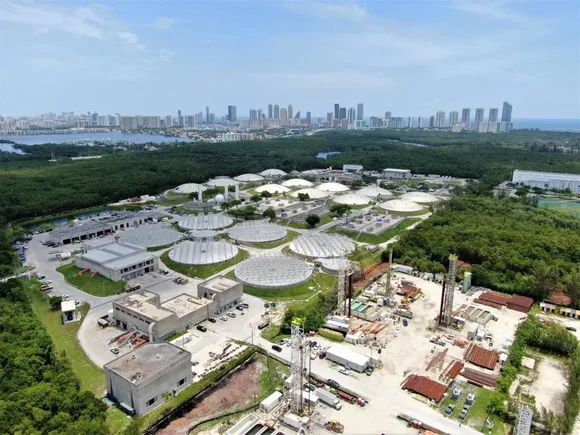Wins in two rapidly expanding construction sectors drove growth in Jacobs’ fiscal year close, according to the company’s fourth quarter earnings report.
Demand for water and environmental services surged during the fourth quarter, said Jacobs CEO Bob Pragada during a conference call with investment analysts to discuss the results. That drove double-digit growth across Jacobs’ portfolio in areas like water conveyance, wastewater treatment and potable reuse.
“We have been successful servicing demand across these categories,” said Pragada. “Notably, during Q4, we delivered several key wins, including our appointment by the Los Angeles Sanitation and Environment to provide progressive design-build services for the Donald C. Tillman Advanced Water Equalization Basin, a critical part of Los Angeles’ long term plans to increase recycled water production by 2035.”
Jacobs also posted growth across geographies, with double-digit gains not only in North America, but also in the United Kingdom, Australia and New Zealand. That shows the global demand for water infrastructure improvements, said Pragada.
In the U.S., much of Jacobs’ project pipeline consists of state and locally-funded projects, said Pragada. He emphasized the stability of these markets, even as the future of federal spending remains uncertain under an incoming administration.

Bob Pragada
Courtesy of Jacobs
“The transportation jobs that we’re in the middle of at a national level have long tails on them,” said Pragada. “We still see the pipeline really strong.”
Although federal spending accounts for about 10% of Jacobs’ portfolio, a majority of that is tied to Department of Defense infrastructure, which Pragada also highlighted as a continued area of strength.
Life sciences and advanced manufacturing construction also contributed to Jacobs’ momentum, according to the company.
“We see that pipeline continuing on,” said Pragada. “Advanced facilities continued strong. That industrial reshoring, onshoring, specifically in the U.S., we’re feeling confident about it.”
Pragada said life sciences clients are accelerating investments in pharmaceutical and biopharmaceutical facilities, which should serve as another critical growth driver. That, coupled with semiconductor construction and the need for data centers to run artificial intelligence applications, should bring in “top line growth,” said Jacobs CFO Venk Nathamuni.
“Our outlook is for life sciences to be the primary driver of revenue growth in fiscal year 2025 as capital investment from our life sciences customers remains robust,” said Nathamuni during the call. “We’re also seeing our customer base broaden in semis and the AI data center opportunity is expanding as we look into fiscal 2025 and beyond.”
Takeaways from earnings
Jacobs reported it earned $325.44 million for its fiscal fourth quarter 2024, which ended Sept. 27, a 118% gain from $149.38 million in profits a year ago. Its revenue for the quarter reached $3 billion, a 4.4% increase from $2.83 billion in the fourth quarter of 2023, according to the company’s earnings report.
The Dallas-based company’s backlog jumped sharply to $21.85 billion, a 22.5% increase from $17.84 billion a year ago.
Analysts praised the company’s results, largely due to profitability and backlog.
“2024 was a solid year for Jacobs, with some strong wins across high-growth end-markets in areas such as water, environmental, and advanced facilities,” wrote Faisal Hersi, equity analyst with financial services Edward Jones in a research note. “We think Jacobs remains well-positioned to benefit from continued U.S. and international infrastructure-spending increases.”
Domestic construction activity should also continue to outperform international markets in the coming year, said Pragada.
“Our U.S. growth remains strong,” said Pragada. “We anticipate it outpacing international demand as we continue building on double-digit backlog increases.”

